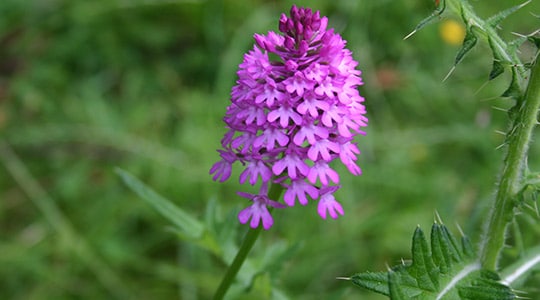Orchids
Diverse and widespread across the world, orchids represent one of the largest families of flowering plants. They are often colourful and fragrant, and many have specialist insect pollinators. Orchids also form symbiotic relationships with microscopic soil fungi, so can be highly sensitive to disturbance and are therefore considered indicators of ecosystem health and stability.
As part of our ongoing habitat restoration work on our own site and at Eelmoor Marsh SSSI in Hampshire, we closely monitor and manage the fortunes of over a dozen species of orchids associated with woodland, grassland and lowland heath ecosystems.
Local populations of species such as the early marsh orchid Dactylorhiza incarnata pulchella, marsh helleborine Epipactis palustris and green flowered helleborine Epipactis phyllanthes have shown signs of increasing in numbers, while others have remained stable or even reappeared in the environment under our careful management. In a new phase of work at our sites, we are seeking to reintroduce species that occurred historically, but have not been recorded for many years. This will support urgently needed ecosystem resilience in the face of future environmental changes and provide benefits to people through enhancing wellbeing and connection to nature.
